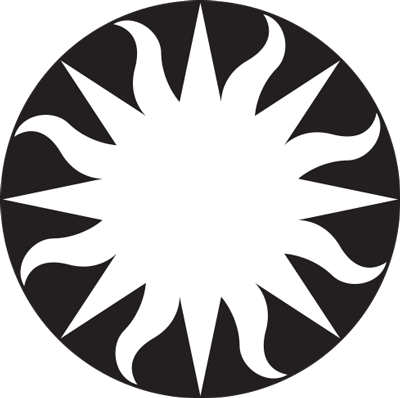A yet better view

esahubble_potw2442a October 14th, 2024
Credit: ESA/Hubble & NASA, D. Thilker, J. Lee and the PHANGS-HST Team
The striking spiral galaxy featured in this week’s Hubble Picture of the Week is Messier 90 (M90, also NGC 4569), located in the constellation Virgo. In 2019, an image of M90 was released using data from the older Wide Field and Planetary Camera 2 — data taken in 1994 soon after the camera’s installation. That image has a distinctive stair-step pattern due to the layout of WFPC2’s sensors. WFPC2 was replaced in 2010 by the Wide Field Camera 3, and Hubble used WFC3 when it turned its aperture to Messier 90 again in 2019 and 2023. The resulting data was processed to create this stunning new image, providing a much fuller view of the galaxy’s dusty disc, its gaseous halo and its bright core. The inner regions of M90’s disc are sites of star formation, which is highlighted here by red H-alpha light from nebulae, but this is absent in the rest of the galaxy. M90 sits among the galaxies of the relatively nearby Virgo Cluster, and the course of its orbit took it on a path near the cluster’s centre about three hundred million years ago. The density of gas in the inner cluster weighed on M90 like a strong headwind, stripping enormous quantities of gas from the galaxy and creating the diffuse halo that can be seen around it here. This gas is no longer available for M90 to form new stars with, and it will eventually fade as a spiral galaxy as a result. M90 is located 55 million light-years from Earth, but it’s one of the very few galaxies getting closer to us. Its orbit through the Virgo cluster has accelerated it so much that it’s in the process of escaping the cluster entirely, and by happenstance it’s moving in our direction — other galaxies in the Virgo cluster have been measured at similar speeds, but in the opposite direction. Over the coming billions of years, we will be treated to a yet better view of M90 while it evolves into a lenticular galaxy. [Image Description: A spiral galaxy. It has a bright core with light spilling out, and its disc is filled with thick clumps of dark reddish dust, which swirls around the galaxy following its rotation. Parts of the disc are speckled with blue, showing brighter and hotter stars. A halo of faintly-lit gas wraps around the galaxy, extending beyond the edges of the image.] Links Pan of Messier 90
Provider: Hubble Space Telescope | ESA
Image Source: https://esahubble.org/images/potw2442a/
Curator: ESA/Hubble, Baltimore, MD, United States
Image Use Policy: Creative Commons Attribution 4.0 International License

- ID
- potw2442a
- Subject Category
- Subject Name
- Messier 90
- Credits
- ESA/Hubble & NASA, D. Thilker, J. Lee and the PHANGS-HST Team
- Release Date
- 2024-10-14T06:00:00
- Lightyears
- Redshift
- Reference Url
- https://esahubble.org/images/potw2442a/
- Type
- Observation
- Image Quality
- Distance Notes
- Facility
- Hubble Space Telescope, Hubble Space Telescope, Hubble Space Telescope, Hubble Space Telescope, Hubble Space Telescope, Hubble Space Telescope
- Instrument
- WFC3, WFC3, WFC3, WFC3, WFC3, WFC3
- Color Assignment
- Purple, Purple, Blue, Green, Red, Red
- Band
- Ultraviolet, Optical, Optical, Optical, Optical, Optical
- Bandpass
- UV, U, B, V, I, H-alpha + NII
- Central Wavelength
- 275, 336, 438, 555, 814, 657
- Start Time
- Integration Time
- Dataset ID
- None, None, None, None, None, None
- Notes
- Coordinate Frame
- ICRS
- Equinox
- J2000
- Reference Value
- 189.20760009734232, 13.163575858748127
- Reference Dimension
- 4177.0, 3793.0
- Reference Pixel
- 2088.5, 1896.5
- Scale
- -1.1011430108018091e-05, 1.1011430108018091e-05
- Rotation
- -75.320000000000007
- Coordinate System Projection:
- TAN
- Quality
- Full
- FITS Header
- Notes
- Creator (Curator)
- ESA/Hubble
- URL
- https://esahubble.org
- Name
- Telephone
- Address
- ESA Office, Space Telescope Science Institute, 3700 San Martin Dr
- City
- Baltimore
- State/Province
- MD
- Postal Code
- 21218
- Country
- United States
- Rights
- Creative Commons Attribution 4.0 International License
- Publisher
- ESA/Hubble
- Publisher ID
- esahubble
- Resource ID
- potw2442a
- Resource URL
- http://esahubble.org/media/archives/images/original/potw2442a.tif
- Related Resources
- Metadata Date
- 2024-10-21T15:55:38.416080
- Metadata Version
- 1.1
Detailed color mapping information coming soon...















